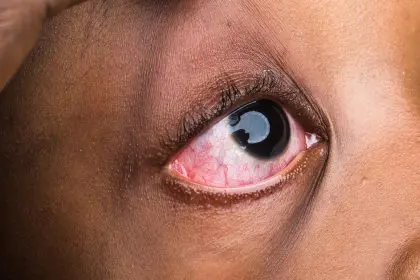Iron deficiency is a common yet often overlooked health issue, particularly among women. It can manifest in various ways, including unusual cravings, hair loss and mood fluctuations. According to a recent report from JAMA Open Network, approximately 34 percent of women aged 18 to 50 in the U.S. are iron deficient. This article will explore the signs of iron deficiency, its implications and how to effectively manage it.
Iron is a vital mineral that plays a crucial role in the production of hemoglobin, the protein in red blood cells responsible for transporting oxygen throughout the body. It also aids in muscle oxygenation through myoglobin. Despite its abundance in nature, iron deficiency is alarmingly common, especially among women. Dr. Imo J. Akpan, a hematologist, emphasizes that many individuals remain unaware of their deficiency, which can lead to serious health complications.
Women are particularly susceptible to iron deficiency due to physiological factors such as menstruation and pregnancy. Monthly menstrual cycles result in iron loss, while pregnant women require additional iron to support fetal development. This increased demand can lead to deficiencies if not adequately addressed.
Iron deficiency can significantly impact quality of life. Here are some common symptoms to watch for:
• Fatigue
• Dizziness or lightheadedness
• Cravings for non-food items, such as ice
• Chest pain or discomfort
• Cognitive impairments
• Exercise intolerance
• Shortness of breath
• Irritability or mood swings
• Restless leg syndrome
• Hair loss
Experiencing one or more of these symptoms does not automatically indicate iron deficiency, but they warrant further investigation.
If you suspect an iron deficiency, it’s essential to consult with a healthcare provider. Diagnosis typically involves a blood test to measure ferritin levels, which indicate the amount of stored iron in the body. Normal ferritin levels for women range from 30 to 150 nanograms per milliliter; levels below 30 indicate deficiency.
Iron deficiency can arise from inadequate dietary intake or excessive loss, such as through heavy menstrual bleeding or gastrointestinal issues. Conditions like Crohn’s disease or irritable bowel syndrome can hinder iron absorption, making it crucial for affected individuals to monitor their iron levels closely.
Fortunately, there are several effective strategies to increase iron levels:
1. Dietary Adjustments
Incorporating iron-rich foods into your diet is essential. Good sources include:
• Meat: beef, chicken, turkey
• Fish
• Eggs
• Legumes: lentils, chickpeas, beans
• Nuts and seeds: almonds, sunflower seeds
• Leafy greens: spinach, broccoli
• Fortified cereals
Be mindful that certain foods and beverages, such as coffee, tea and dairy, can inhibit iron absorption. Conversely, vitamin C can enhance absorption, so pairing iron-rich foods with vitamin C sources like citrus fruits can be beneficial.
2. Iron Supplements
If dietary changes are insufficient, iron supplements may be necessary. However, it’s crucial to consult a healthcare provider before starting any supplementation. They can recommend the appropriate type and dosage while monitoring your progress.
3. Iron Infusions
For individuals who struggle with oral supplements or require rapid replenishment, iron infusions may be an option. This method allows for quick absorption of iron directly into the bloodstream, but it may not always be covered by insurance.
Iron deficiency is a significant health concern that disproportionately affects women, particularly during their reproductive years. Recognizing the signs and understanding the importance of iron can empower individuals to take proactive steps toward better health. If you suspect you may be iron deficient, consult with a healthcare professional for appropriate testing and treatment options.
Studies have shown that Black women are at a higher risk of iron deficiency anemia compared to other racial groups. This disparity can be attributed to various factors, including dietary habits, higher rates of certain health conditions and socioeconomic factors that may affect access to nutrient-rich foods.
Moreover, some cultural food practices in Black communities, while rich in tradition, may not always provide adequate iron intake. For instance, soul food dishes, while delicious and culturally significant, may not always be the best sources of iron.
It’s also important to note that for Black women with natural hair, iron deficiency can contribute to hair loss or slow hair growth, which can be particularly distressing given the cultural significance of hair in the Black community.
For those managing busy lifestyles common among professionals, the fatigue associated with iron deficiency can be particularly challenging. It’s crucial to prioritize nutrition and regular health check-ups, even amidst busy schedules.
Lastly, for those considering pregnancy or already pregnant, maintaining adequate iron levels is critical for both maternal and fetal health. Black women face higher risks of pregnancy complications, some of which can be exacerbated by iron deficiency.
By staying informed about iron deficiency and taking proactive steps to maintain healthy iron levels, women can better protect their health, energy levels and overall well-being. Remember, your health is your wealth, and taking care of it is an act of self-love and empowerment.















